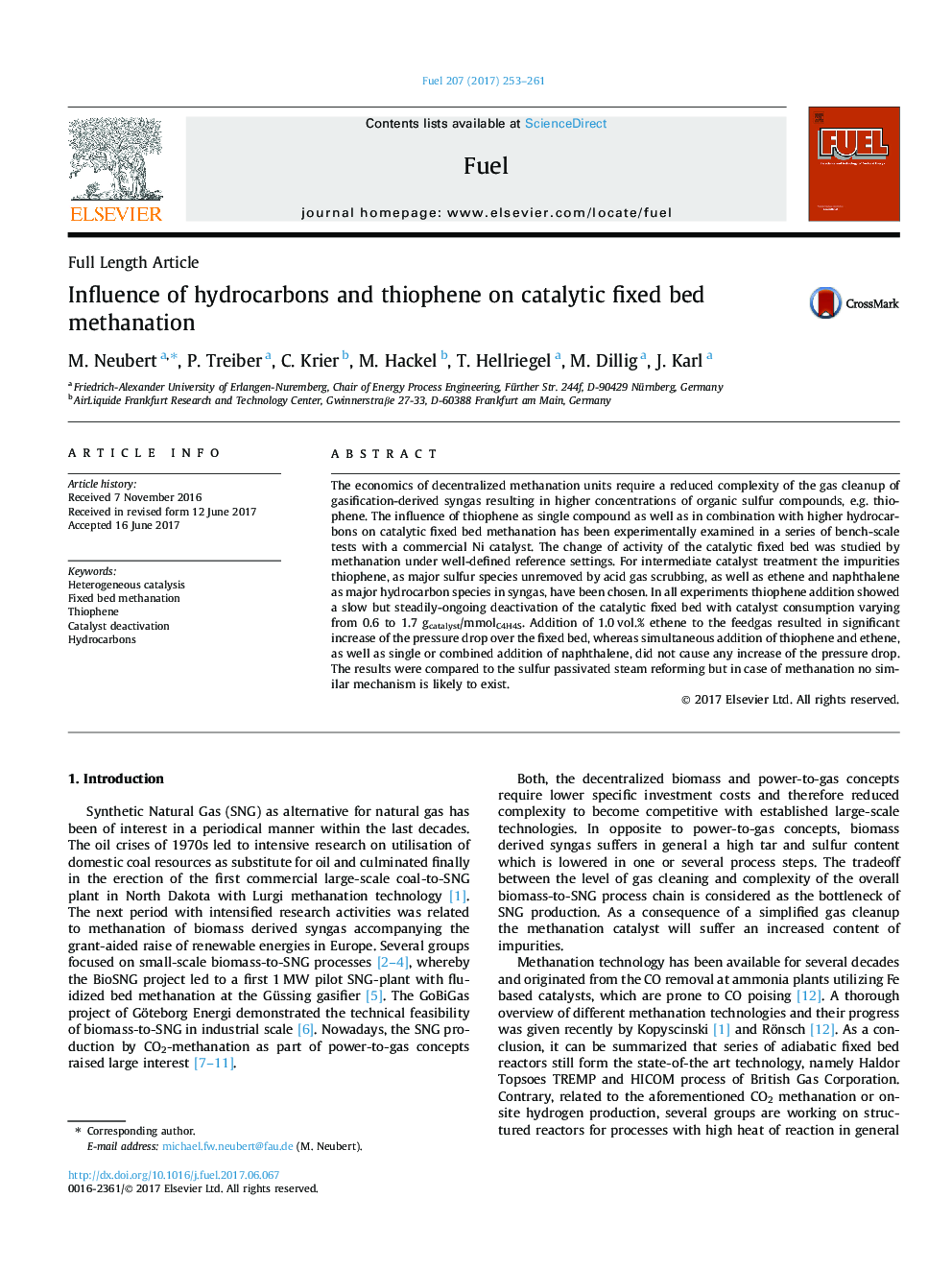| Article ID | Journal | Published Year | Pages | File Type |
|---|---|---|---|---|
| 4768480 | Fuel | 2017 | 9 Pages |
Abstract
The economics of decentralized methanation units require a reduced complexity of the gas cleanup of gasification-derived syngas resulting in higher concentrations of organic sulfur compounds, e.g. thiophene. The influence of thiophene as single compound as well as in combination with higher hydrocarbons on catalytic fixed bed methanation has been experimentally examined in a series of bench-scale tests with a commercial Ni catalyst. The change of activity of the catalytic fixed bed was studied by methanation under well-defined reference settings. For intermediate catalyst treatment the impurities thiophene, as major sulfur species unremoved by acid gas scrubbing, as well as ethene and naphthalene as major hydrocarbon species in syngas, have been chosen. In all experiments thiophene addition showed a slow but steadily-ongoing deactivation of the catalytic fixed bed with catalyst consumption varying from 0.6 to 1.7 gcatalyst/mmolC4H4S. Addition of 1.0Â vol.% ethene to the feedgas resulted in significant increase of the pressure drop over the fixed bed, whereas simultaneous addition of thiophene and ethene, as well as single or combined addition of naphthalene, did not cause any increase of the pressure drop. The results were compared to the sulfur passivated steam reforming but in case of methanation no similar mechanism is likely to exist.
Related Topics
Physical Sciences and Engineering
Chemical Engineering
Chemical Engineering (General)
Authors
M. Neubert, P. Treiber, C. Krier, M. Hackel, T. Hellriegel, M. Dillig, J. Karl,
